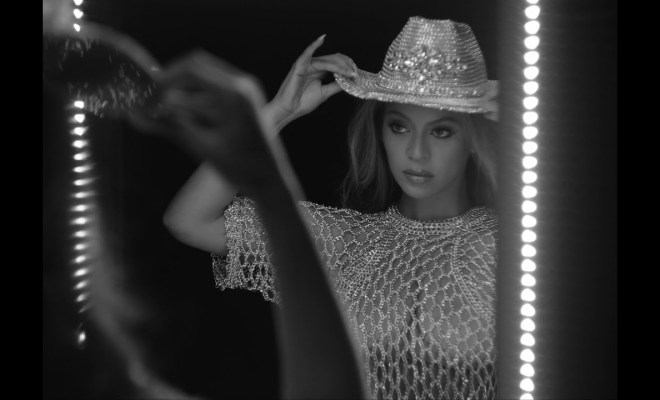When Beyoncé released her songs, “Texas Hold’em” and “16 Carriages” following the 66th Grammy Awards, I heard so many people talking about who has the cultural agency to make country music. There are some country music fans saying that Beyoncé is out of her element and others who are happy to see a new face in the genre. I recall similar conversations when Lil Nas X made his summer hit “Old Town Road.” The Billy Ray Cyrus cosign barely got it accepted for him to be a performer at the Country Musical Awards that year. Similar chatter rose when R&B singer K. Michelle announced that she was releasing a country album last year. Mind you, I don’t recall any of this chatter when Taylor Swift crossed over from country to pop.
I think that this chatter about what music belongs to whom comes from a lack of knowledge of where music comes from. The banjo, fiddle and guitar as we know them derive from ancient African instruments brought to the Americas through the Middle Passage. Many of our wind instruments come from Native American/Indigenous cultures. Hence, the instrumentation and beat of country, gospel and blues are all very similar. This is why when you go back and listen to gospel singer and guitarist Sister Rosetta Tharpe, you’ll hear similar bass lines in rock and country music today. What changes from country to funk are the tempo and the drums.
Contemporary artists like Rhiannon Giddens, Brittney Spencer, Jimmie Allen, and Kane Brown are going rediscovering the backbeat in country music and widening the lyrical content for an already diverse audience. (See them highlighted in the Prime Video documentary, “For Love and Country.”)
You see growing up in the South, country music is everywhere, no matter your race. Part of the reason is because of who has access to own and operate radio stations. We have to remember that urban radio is a relatively recent invention, with WERD in Atlanta becoming the first Black-owned radio station in 1949. More stations came along in the latter half of the 20th century at the advent of the Civil Rights and Black Power Movements. (See the movie “Talk to Me” starring Don Cheadle.) Hip-hop radio didn’t happen until the 1980s.
For the first century of music being played on the radio in America, Black music, or race music as it was called, was largely thought of as the devil’s music. When music by Black artists did start getting played on mainstream radio, it was often during a specific hour of the day late at night when white teenagers would be safely, tucked in their beds and unable to access it. (We all know how successful that was.) WDIA in Memphis was one of the first stations in the South to adopt a race music hour, hence the musical “Hairspray.” Otherwise, Black country and rock music got covered by white artists and repackaged without any compensation for the Black originators.
What this also meant is that generations of Black people grew up listening to what was available in their communities, and if you lived outside of an urban area, that meant exclusively country or classic rock. Find a Black person born before 1975 and I guarantee you they can name you at least five Kenny Rogers songs for this very reason. Country music, like rap music, is American music.
Even when I was a little girl in the late 1990s and early 2000s, Faith Hill, Leanne Rhimes, Reba McIntyre, Martina McBride, Shania Twain and Tanya Tucker were all very popular artists and their music was everywhere. It wasn’t played in my home, but I knew the words because it was in stores, on commercials, and Disney concert specials. Two years ago, when I went to CMA Fest in Nashville with some friends, we attended the Carrie Underwood “Denim & Rhinestones” experience for the release of her album and went to Dolly Parton’s White Limozeen bar. We weren’t the only people who looked like us in attendance, but the artist line-up was pretty monochromatic.
My hope is that when an artist like Beyoncé enters the genre, it opens the door to diversifying who is accepted as an artist in country music. This also creates a way for audiences to become more diverse at country music events and concerts. I deeply believe that culture and art have the ability to build bridges between people in a way that is so completely necessary during these politically divisive times. It’s been said that the most segregated hour in America is Sunday morning, but I think we also have to look at concert going habits because people find God through music. There is love to be found on the dance floor.
Or perhaps Beyoncé said it best: Ain’t got time to waste, I got art to make. I got love to create on this holy night. They won’t dim my light, all these years I fight.

